I always get the error:
Error in levels(x) : argument "object" is missing, with no default
when trying to fit:
fit60 <- nls(Predicted.Bromide~c+a*(1-exp(-b*n)),start=C(a=10,b=0.02,c=0),data=min60)
Or with the columns extracted to x=min60min and y=area:
fit60 <- nls(area~C+A*(1-exp(-B*min60min)),start=C(A=0,B=0,C=0))
Dataset:
dput(min60)
structure(list(Predicted.Bromide = c(4721.05, 16030.5, 17251.1,
20353.1, 22997.8, 24657.3, 26896.4, 26529.1, 25282.7, 26546.2,
27265.3, 27491.1, 27678.4, 30140.1, 28285.4, 28079.6, 29111.3,
28781.1, 28723.7, 27959.3, 29430.7, 30273.6, 28618.7, 29716,
29761.5, 30276.7, 29642.6, 31369.1, 33416.5, 31204.2, 32652.1,
31013.3, 32591.6, 33436.7, 32240.2, 32557.2, 31548.4, 33701.9,
32376.5, 34323.4, 34430.5, 33255.7, 33988.1, 32779.9, 34013.3,
35157.1, 34905.4, 32918.9, 34915.6, 35001.5, 33874.1, 34954.4,
34495.8, 34679.4, 33409.8, 34318.7), n = c(1, 2, 3, 4, 5, 6,
7, 8, 9, 10, 11, 12, 13, 14, 15, 16, 17, 18, 19, 20, 21, 22,
23, 24, 25, 26, 27, 28, 29, 30, 31, 32, 33, 34, 35, 36, 37, 38,
39, 40, 41, 42, 43, 44, 45, 46, 47, 48, 49, 50, 51, 52, 53, 54,
55, 56)), .Names = c("Predicted.Bromide", "n"), row.names = c(NA,
56L), na.action = structure(57L, .Names = "57", class = "omit"), class = "data.frame")
What can be the problem? In my opinion everything is correct in the code.

